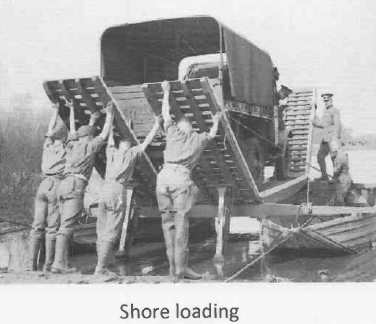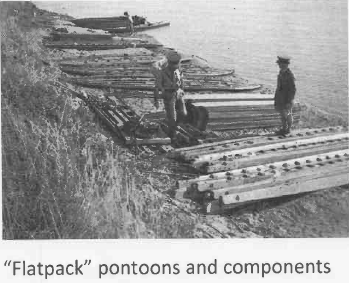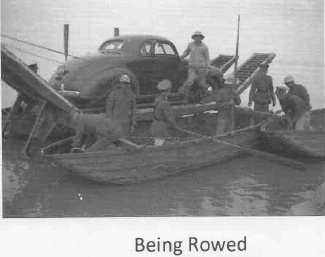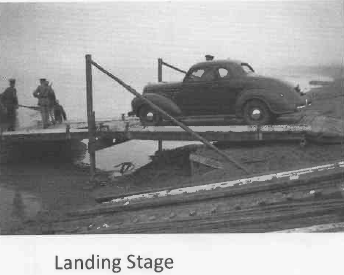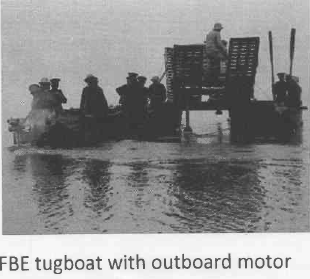
39 CER Museum Dioramas & Plaques

39 CER Museum Dioramas & Plaques

Class 5 Folding Boat
Equipment (FBE) Raft.
Developed by the British in 1930s and used throughout
World War 2, in all theatres of war by the Commonwealth Forces. It was
partially replaced by the larger Class 9 Close Support Raft in the middle of
the war. The pontoons were shipped as "flat packs" and then unfolded
to form the pontoons. It could be built by 20 to 30 sappers in a few hours and
was used to transport light vehicles and personnel over steams and rivers. Once
a FBE floating bridge was built nearby, the raft was dismantled and shipped
forward for another crossing. This model is of a Canadian built Mark 1 FBE
built in Montreal in the late 1930s.
Landing Stage. Although the raft could load and unload vehicles directly from the shore,
landing stages were used when the water near the shore was too shallow. The
landing stage consisted of ramps and a FBE pontoon.
Folding Boat
Equipment Pontoon used as a boat. This boat was the same pontoon as used
for the raft. The boat is provided with an outboard motor and could be lashed
to the side of the raft for use as a tugboat.
Raft Crew and Shore
Party. Normally consisted of 10 to 20 soldiers. The raft had four oarsmen,
and a raft commander. Although this raft has oarsmen later versions were
equipped with propulsion units. The rest of the sappers were either part of the
shore parties or resting.
Cavalry. Cavalry
units existed in the Canadian Army until World War 2, and the last Canadian
cavalry units was re-equipped with tanks in 1940. The Canadian government
provided horses for the Permanent Force units, but the Militia units had to
provide their own horses, hence most of the Militia cavalry units were in rural
areas. The Canadian cavalry in the 1930s was primarily used for reconnaissance
and liaison work and if they had to fight would dismount from their horses and
fight as infantry. The militia cavalry units in Western Canada in the late
1930s included the Saskatchewan Horse, Alberta Horse and the British Columbia
Horse.
Bell Tent. Used
by British and Commonwealth forces since the 19th century and by the Canadian
army until the 1970s.
